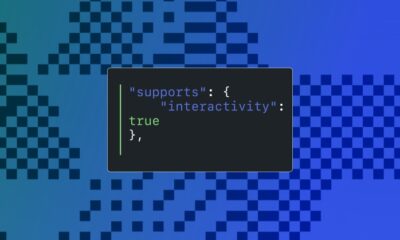TECHNOLOGY
Making life easier for developers

Petr Svoboda, CEO at Stratox Cloud Native, explains how CodeNow is making cloud-native development fast and enjoyable for everyone.
Could you start by telling us a little bit more about CodeNOW?
CodeNOW is a true startup. That means we are working hard to create a platform that simplifies cloud-native software development, especially when based on a micro-service architecture. We are trying to make cloud-native development fast and enjoyable for mere mortals. Especially, I would say, for developers who are not yet that savvy around the infrastructure and setup needs.
We are able to abstract away the complexity of cloud infrastructure management and automate many of the common and repetitive tasks. The platform as such increases productivity and we hope it would make cloud-native development fun again.
When and how did you get started?
CodeNOW was founded in 2019 and the platform came out of beta in 2020. We are now looking to expand our company to the US and have set up a company there.
Setting up shop in the US is a serious step forward for you and the company!
Yep, you could say that. We have just opened a small office in San Francisco and have hired our first sales staff. The process is still slow but I’m happy it seems to be taking off, we are getting great feedback and have managed to land our first customers. We are very confident in the future and continued expansion.
Is CodeNow a part of the software delivery enterprise, Stratox?
Exactly. Stratox is essentially a set of companies. CodeNOW was bootstrapped originally from my own pocket combined with revenue generated by Stratox’s delivery of professional services. As not only us but also the market and investors saw the potential and CodeNOW kept growing, we decided to accept some investment and are using this to scale-up.
So how can companies benefit from using CodeNOW?
Well, CodeNOW was conceived during my time working as an architect for IBM where I was mostly responsible for delivering large transformation projects. I encountered a lot of inefficiencies in the development and deployment process and was shocked by the time wasted that was caused by developers basically twiddling their thumbs and waiting for others to finish their job. This led me to the thought that money could be saved by empowering developers with smart self-servicing technology.
If you as a developer have the need to spin up a new database, cache, message broker, or similar infrastructure component, you really should not need to wait for others. Removing this delay in the development process will massively increase overall productivity and the value created during the software development process.
So, that was the original idea. In addition, we found that especially developers employed at larger companies, or working as contractors are typically not getting a lot of time to self-learn or to be educated properly around cloud-native technology, tools, and best practices.
We saw a big opportunity here by abstracting away a lot of complexity below Kubernetes and providing these developers with all the tools and best practices that would be understandable and available for immediate use straight ‘out of the box’.
I hear everyone talking about cloud-native development as this complicated beast. We want to prove the opposite and our mission with CodeNOW is to make developing for micro-service and distributed software architectures frictionless and sustainable.
There’s a lot of talk about Kubernetes but I’m not sure too many people know exactly what it is.
You are right, and unfortunately, not too many people exactly know when it is a good tool to use and when not.
So when would it be a good tool to use?
Well, I’d say it is suitable especially when you are solving horizontal scalability problems. Those cases when you need to operate hundreds or thousands of instances of your business logic. Kubernetes can be of great help with that. As a means to achieve high availability, resilience, etc. I’d say it has mainly a back-end focus. Front-end developers are used to slightly different tooling, and it’s easier for them to survive with their CDNs and other technologies. So not necessarily is Kubernetes the best thing for them. But for back-end developers, and especially for integration with Microsoft, I believe it’s the best tool out there.
Are there any particular trends that you’ve noticed around DevOps this year?
Yes, one trend that we are seeing is a need to almost divide your approach to DevOps. On one side on a platform level, where there’s a need for high-level automation within the enterprise or company. And on the other side an approach to DevOps that is very close to your application development practice and where there’s a need to primarily automate processes around the applications you have in development.
Companies often think that as soon as they’re using CI/CD pipelines, they have their DevOps practice in place. You sometimes find someone wearing a DevOps badge who is telling the organisation that they are ‘ The DevOps Guy’. I do believe there still exists some lack of understanding however…
Essentially, DevOps is more about cooperation and automation regardless of who is responsible. It is true that the sheer scale of required knowledge and technologies, makes this difficult, especially for developers, because there are huge infrastructure and operational aspects to it. Typically developers don’t want to bother with those and want to focus on creating the business logic of the app.
So, a trend we’re seeing is many companies aiming to hire DevOps specialists and make them part of the development team. I personally think that this is probably not the best idea.
Skills always come up whenever we’re talking about technology. Are there enough people in DevOps?
It’s a really scarce resource. Looking at what it takes and what is involved during typical application development, we can see that even the developers themselves struggle in getting the job done. Any specialist is able to serve let’s say 10 people, and beyond that would become overloaded with requests. So the number of people needed that have the right skills is definitely much higher than what is currently available on the market.
And I believe that’s why we currently see this strong wave in upcoming development platforms, all trying to automate different parts of the process for developers.
You are still a relatively new company and you are already moving to the US. Is there anything else that you’ll be focusing on in the coming years?
We’ve been finalising the SaaS version of our product, which is available immediately for smaller companies. We believe this version is of great value, especially for non-tech founders for example. Our ideal customers for this product are startups that need to manage remote teams and founders who need to take care of remote developers. Companies where speed to market and ease of development is of the essence.
On the other hand, we continue to serve enterprises. In enterprise business, we have proven to be successful with offering CodeNOW as a rapid prototyping tool for MVPs and prototypes that are built cloud-native from the start.
And I think it’s important to mention that we have reached ISO27k certification, so we therefore can offer enterprises and any company the certainty that CodeNOW is safe and secure from the data perspective.
Thank you so much for your time! I wish you all the best with your US adventure
Thank you for this interview and yes I’m sure this is going to be a blast!
Stratox Cloud Native will be in attendance at TechEx Europe in Amsterdam on September 20-21. Register for your free ticket here.
Source link
TECHNOLOGY
Next-gen chips, Amazon Q, and speedy S3

AWS re:Invent, which has been taking place from November 27 and runs to December 1, has had its usual plethora of announcements: a total of 21 at time of print.
Perhaps not surprisingly, given the huge potential impact of generative AI – ChatGPT officially turns one year old today – a lot of focus has been on the AI side for AWS’ announcements, including a major partnership inked with NVIDIA across infrastructure, software, and services.
Yet there has been plenty more announced at the Las Vegas jamboree besides. Here, CloudTech rounds up the best of the rest:
Next-generation chips
This was the other major AI-focused announcement at re:Invent: the launch of two new chips, AWS Graviton4 and AWS Trainium2, for training and running AI and machine learning (ML) models, among other customer workloads. Graviton4 shapes up against its predecessor with 30% better compute performance, 50% more cores and 75% more memory bandwidth, while Trainium2 delivers up to four times faster training than before and will be able to be deployed in EC2 UltraClusters of up to 100,000 chips.
The EC2 UltraClusters are designed to ‘deliver the highest performance, most energy efficient AI model training infrastructure in the cloud’, as AWS puts it. With it, customers will be able to train large language models in ‘a fraction of the time’, as well as double energy efficiency.
As ever, AWS offers customers who are already utilising these tools. Databricks, Epic and SAP are among the companies cited as using the new AWS-designed chips.
Zero-ETL integrations
AWS announced new Amazon Aurora PostgreSQL, Amazon DynamoDB, and Amazon Relational Database Services (Amazon RDS) for MySQL integrations with Amazon Redshift, AWS’ cloud data warehouse. The zero-ETL integrations – eliminating the need to build ETL (extract, transform, load) data pipelines – make it easier to connect and analyse transactional data across various relational and non-relational databases in Amazon Redshift.
A simple example of how zero-ETL functions can be seen is in a hypothetical company which stores transactional data – time of transaction, items bought, where the transaction occurred – in a relational database, but use another analytics tool to analyse data in a non-relational database. To connect it all up, companies would previously have to construct ETL data pipelines which are a time and money sink.
The latest integrations “build on AWS’s zero-ETL foundation… so customers can quickly and easily connect all of their data, no matter where it lives,” the company said.
Amazon S3 Express One Zone
AWS announced the general availability of Amazon S3 Express One Zone, a new storage class purpose-built for customers’ most frequently-accessed data. Data access speed is up to 10 times faster and request costs up to 50% lower than standard S3. Companies can also opt to collocate their Amazon S3 Express One Zone data in the same availability zone as their compute resources.
Companies and partners who are using Amazon S3 Express One Zone include ChaosSearch, Cloudera, and Pinterest.
Amazon Q
A new product, and an interesting pivot, again with generative AI at its core. Amazon Q was announced as a ‘new type of generative AI-powered assistant’ which can be tailored to a customer’s business. “Customers can get fast, relevant answers to pressing questions, generate content, and take actions – all informed by a customer’s information repositories, code, and enterprise systems,” AWS added. The service also can assist companies building on AWS, as well as companies using AWS applications for business intelligence, contact centres, and supply chain management.
Customers cited as early adopters include Accenture, BMW and Wunderkind.
Want to learn more about cybersecurity and the cloud from industry leaders? Check out Cyber Security & Cloud Expo taking place in Amsterdam, California, and London. Explore other upcoming enterprise technology events and webinars powered by TechForge here.
TECHNOLOGY
HCLTech and Cisco create collaborative hybrid workplaces

Digital comms specialist Cisco and global tech firm HCLTech have teamed up to launch Meeting-Rooms-as-a-Service (MRaaS).
Available on a subscription model, this solution modernises legacy meeting rooms and enables users to join meetings from any meeting solution provider using Webex devices.
The MRaaS solution helps enterprises simplify the design, implementation and maintenance of integrated meeting rooms, enabling seamless collaboration for their globally distributed hybrid workforces.
Rakshit Ghura, senior VP and Global head of digital workplace services, HCLTech, said: “MRaaS combines our consulting and managed services expertise with Cisco’s proficiency in Webex devices to change the way employees conceptualise, organise and interact in a collaborative environment for a modern hybrid work model.
“The common vision of our partnership is to elevate the collaboration experience at work and drive productivity through modern meeting rooms.”
Alexandra Zagury, VP of partner managed and as-a-Service Sales at Cisco, said: “Our partnership with HCLTech helps our clients transform their offices through cost-effective managed services that support the ongoing evolution of workspaces.
“As we reimagine the modern office, we are making it easier to support collaboration and productivity among workers, whether they are in the office or elsewhere.”
Cisco’s Webex collaboration devices harness the power of artificial intelligence to offer intuitive, seamless collaboration experiences, enabling meeting rooms with smart features such as meeting zones, intelligent people framing, optimised attendee audio and background noise removal, among others.
Want to learn more about cybersecurity and the cloud from industry leaders? Check out Cyber Security & Cloud Expo taking place in Amsterdam, California, and London. Explore other upcoming enterprise technology events and webinars powered by TechForge here.
TECHNOLOGY
Canonical releases low-touch private cloud MicroCloud

Canonical has announced the general availability of MicroCloud, a low-touch, open source cloud solution. MicroCloud is part of Canonical’s growing cloud infrastructure portfolio.
It is purpose-built for scalable clusters and edge deployments for all types of enterprises. It is designed with simplicity, security and automation in mind, minimising the time and effort to both deploy and maintain it. Conveniently, enterprise support for MicroCloud is offered as part of Canonical’s Ubuntu Pro subscription, with several support tiers available, and priced per node.
MicroClouds are optimised for repeatable and reliable remote deployments. A single command initiates the orchestration and clustering of various components with minimal involvement by the user, resulting in a fully functional cloud within minutes. This simplified deployment process significantly reduces the barrier to entry, putting a production-grade cloud at everyone’s fingertips.
Juan Manuel Ventura, head of architectures & technologies at Spindox, said: “Cloud computing is not only about technology, it’s the beating heart of any modern industrial transformation, driving agility and innovation. Our mission is to provide our customers with the most effective ways to innovate and bring value; having a complexity-free cloud infrastructure is one important piece of that puzzle. With MicroCloud, the focus shifts away from struggling with cloud operations to solving real business challenges” says
In addition to seamless deployment, MicroCloud prioritises security and ease of maintenance. All MicroCloud components are built with strict confinement for increased security, with over-the-air transactional updates that preserve data and roll back on errors automatically. Upgrades to newer versions are handled automatically and without downtime, with the mechanisms to hold or schedule them as needed.
With this approach, MicroCloud caters to both on-premise clouds but also edge deployments at remote locations, allowing organisations to use the same infrastructure primitives and services wherever they are needed. It is suitable for business-in-branch office locations or industrial use inside a factory, as well as distributed locations where the focus is on replicability and unattended operations.
Cedric Gegout, VP of product at Canonical, said: “As data becomes more distributed, the infrastructure has to follow. Cloud computing is now distributed, spanning across data centres, far and near edge computing appliances. MicroCloud is our answer to that.
“By packaging known infrastructure primitives in a portable and unattended way, we are delivering a simpler, more prescriptive cloud experience that makes zero-ops a reality for many Industries.“
MicroCloud’s lightweight architecture makes it usable on both commodity and high-end hardware, with several ways to further reduce its footprint depending on your workload needs. In addition to the standard Ubuntu Server or Desktop, MicroClouds can be run on Ubuntu Core – a lightweight OS optimised for the edge. With Ubuntu Core, MicroClouds are a perfect solution for far-edge locations with limited computing capabilities. Users can choose to run their workloads using Kubernetes or via system containers. System containers based on LXD behave similarly to traditional VMs but consume fewer resources while providing bare-metal performance.
Coupled with Canonical’s Ubuntu Pro + Support subscription, MicroCloud users can benefit from an enterprise-grade open source cloud solution that is fully supported and with better economics. An Ubuntu Pro subscription offers security maintenance for the broadest collection of open-source software available from a single vendor today. It covers over 30k packages with a consistent security maintenance commitment, and additional features such as kernel livepatch, systems management at scale, certified compliance and hardening profiles enabling easy adoption for enterprises. With per-node pricing and no hidden fees, customers can rest assured that their environment is secure and supported without the expensive price tag typically associated with cloud solutions.
Want to learn more about cybersecurity and the cloud from industry leaders? Check out Cyber Security & Cloud Expo taking place in Amsterdam, California, and London. Explore other upcoming enterprise technology events and webinars powered by TechForge here.
-

 SEO7 days ago
SEO7 days agoGoogle Limits News Links In California Over Proposed ‘Link Tax’ Law
-

 SEARCHENGINES6 days ago
SEARCHENGINES6 days agoGoogle Core Update Volatility, Helpful Content Update Gone, Dangerous Google Search Results & Google Ads Confusion
-
SEARCHENGINES7 days ago
Daily Search Forum Recap: April 12, 2024
-

 SEO6 days ago
SEO6 days ago10 Paid Search & PPC Planning Best Practices
-

 MARKETING6 days ago
MARKETING6 days ago2 Ways to Take Back the Power in Your Business: Part 2
-

 MARKETING4 days ago
MARKETING4 days ago5 Psychological Tactics to Write Better Emails
-

 SEARCHENGINES5 days ago
SEARCHENGINES5 days agoWeekend Google Core Ranking Volatility
-

 PPC6 days ago
PPC6 days agoCritical Display Error in Brand Safety Metrics On Twitter/X Corrected















You must be logged in to post a comment Login